Filter by
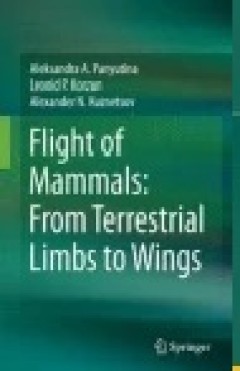
Flight of Mammals: From Terrestrial Limbs to Wings
This book offers a new explanation for the development of flight in mammals and offers detailed morphological descriptions of mammals with flapping flight. The skeletomuscular apparatus of the shoulder girdle and forelimbs of tree shrews, flying lemurs and bats is described in detail. Special attention is paid to the recognition of peculiar features of the skeleton and joints. For the basic loc…
- Edition
- -
- ISBN/ISSN
- 978-3-319-08756-6
- Collation
- XXVII, 303 hlm.
- Series Title
- -
- Call Number
- -

What If We Don't Die? The Morality of Immortality
This book deals with the very real possibility of earthly immortality and the human and societal implications of such immortality, including whether it is desirable. It looks at what makes immortality appear so attractive and at the possibility that we would be better served with longer lives and the freedom to terminate our lives at the time when life has given us all the joy, inspiration a…
- Edition
- -
- ISBN/ISSN
- 978-3-319-19093-8
- Collation
- VIII, 183
- Series Title
- -
- Call Number
- -
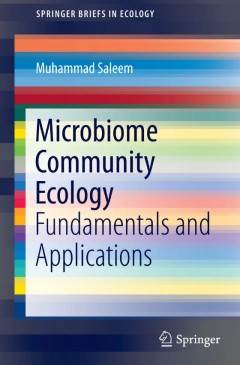
Microbiome Community Ecology
This book reviews the mechanisms, patterns, and processes that regulate prokaryotic diversity through different habitats in the context of evolutionary and ecological hypotheses, principles, and theories. Despite the tremendous role of prokaryotic diversity in the function of the global ecosystem, it remains understudied in comparison to the rest of biological diversity. In this book, the autho…
- Edition
- 1
- ISBN/ISSN
- 978-3-319-11664-8
- Collation
- VIII, 152
- Series Title
- SpringerBriefs in Ecology
- Call Number
- -

Vertebrate Myogenesis Stem Cells and Precursors
This book addresses the differentiation control of skeletal muscle in different locations of the vertebrate body Particular attention is paid to novel regulatory molecules and signals as well as the heterogeneity of origin that have revealed a developmental overlap between skeletal and cardiac muscle. Different functional muscle groups are the product of the evolution of the vertebrate classes,…
- Edition
- -
- ISBN/ISSN
- 978-3-662-44608-9
- Collation
- 2 b/w illustrations, 23 illustrations in colour
- Series Title
- -
- Call Number
- -
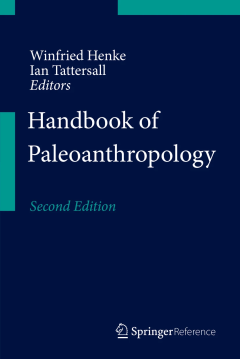
Handbook of Paleoanthropology
This extensive, three-volume handbook, intensively updated and enlarged, is a superb new resource for students, researchers, and practitioners in paleoanthropology. A baseline storehouse covering the full extent of current knowledge, the volume features an online e-reference work that will be updated with future developments in this fascinating discipline. Often cited as the most multidisciplin…
- Edition
- -
- ISBN/ISSN
- 978-3-642-39978-7
- Collation
- XLIII, 2624
- Series Title
- -
- Call Number
- 570

Handbook of Evolutionary Thinking in the Sciences
The Darwinian theory of evolution is itself evolving and this book presents the details of the core of modern Darwinism and its latest developmental directions. The authors present current scientific work addressing theoretical problems and challenges in four sections, beginning with the concepts of evolution theory, its processes of variation, heredity, selection, adaptation and function, and …
- Edition
- -
- ISBN/ISSN
- 978-94-017-9013-0
- Collation
- XIX, 910
- Series Title
- -
- Call Number
- 570 HAN
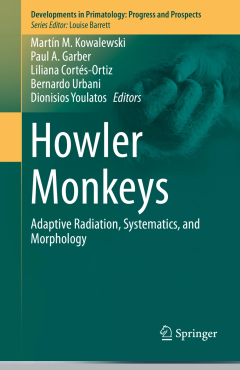
Howler Monkeys: Adaptive Radiation, Systematics, and Morphology
Howler monkeys (genus Alouatta) comprise 12 species of leaf-eating New World monkeys that range from southern Mexico through northern Argentina. This genus is the most widespread of any New World primate and can be found to inhabit a range of forest types from undisturbed rainforest to severely anthropogenically-impacted forest fragments. Although there have been many studies on individual spec…
- Edition
- -
- ISBN/ISSN
- 978-1-4939-1956-7
- Collation
- XXI, 425
- Series Title
- -
- Call Number
- 540 HOW

Learning Strategies and Cultural Evolution during the Palaeolithic
This volume is motivated by the desire to explain why Neanderthals were replaced by modern humans, in terms of cultural differences between the two (sub-) species. It provides up-to-date coverage on the theory of cultural evolution as is being used by anthropologists, archaeologists, biologists and psychologists to decipher hominin cultural change and diversity during the Palaeolithic. The cont…
- Edition
- -
- ISBN/ISSN
- 978-4-431-55363-2
- Collation
- -
- Series Title
- -
- Call Number
- -
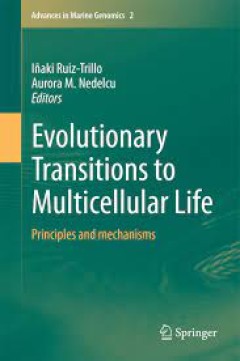
Evolutionary Transitions to Multicellular Life Principles and mechanisms
The book integrates our understanding of the factors and processes underlying the evolution of multicellularity by providing several complementary perspectives (both theoretical and experimental) and using examples from various lineages in which multicellularity evolved. Recent years marked an increased interest in understanding how and why these transitions occurred, and data from various fiel…
- Edition
- -
- ISBN/ISSN
- 978-94-017-9642-2
- Collation
- 40 b/w illustrations, 40 illustrations in colour
- Series Title
- -
- Call Number
- -
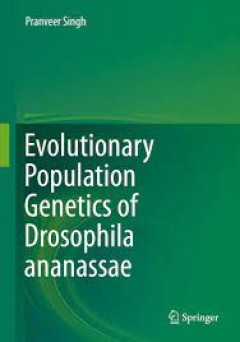
Evolutionary Population Genetics of Drosophila ananassae
This book introduces readers to classical population genetics and the ways in which it can be applied to practical problems, including testing for natural selection, genetic drift, genetic differentiation, population structuring, gene flow and linkage disequilibrium. It provides a comprehensive monograph on the topic, addressing the theory, applications and evolutionary deductions, which are cl…
- Edition
- -
- ISBN/ISSN
- 978-81-322-2565-2
- Collation
- XI, 106
- Series Title
- -
- Call Number
- -
 Computer Science, Information & General Works
Computer Science, Information & General Works  Philosophy & Psychology
Philosophy & Psychology  Religion
Religion  Social Sciences
Social Sciences  Language
Language  Pure Science
Pure Science  Applied Sciences
Applied Sciences  Art & Recreation
Art & Recreation  Literature
Literature  History & Geography
History & Geography